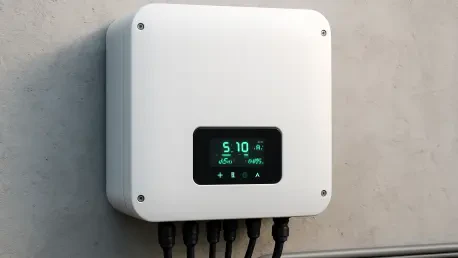Australia stands at the forefront of renewable energy adoption, with one in three households tapping into the abundant power of the sun through rooftop solar panels, making it a global leader in per capita installations. This remarkable achievement, while a testament to the nation’s commitment to clean energy, has brought significant challenges in managing the surplus power generated, especially on days when demand is low. The national grid often struggles to absorb this excess, leading to wasted potential and strict export limits for households. However, a transformative solution is on the horizon with the introduction of new smart inverter rules, particularly the Australian Common Smart Inverter Profile (CSIP-AUS). These regulations are poised to redefine how solar energy integrates into the grid, promising not only to increase the amount of power households can export but also to alleviate infrastructure stress and potentially reduce electricity costs for consumers across the country.
Tackling the Solar Overflow Challenge
Australia’s unparalleled embrace of rooftop solar has created a unique predicament where the grid cannot always handle the flood of energy produced during peak sunlight hours, especially in regions with high penetration like South Australia. Export limits, sometimes as restrictive as 1.5 kW per household, are imposed to prevent overloading local networks, meaning a significant portion of generated solar power goes unused for much of the year. This inefficiency not only frustrates homeowners but also hampers the broader transition to renewable energy. The new smart inverter rules aim to address this by introducing a more intelligent approach to energy management. By rethinking how surplus power is handled, these regulations could unlock the full potential of Australia’s solar resources, ensuring that clean energy contributes more effectively to the national energy mix without compromising grid stability.
The scale of solar adoption in Australia highlights both an opportunity and a pressing need for innovation in grid management practices. With sunny days often resulting in more power generated than consumed, the current static export caps fail to adapt to real-time grid conditions, leading to unnecessary waste. Smart inverter standards, particularly through frameworks like CSIP-AUS, offer a pathway to dynamically adjust these limits based on immediate capacity, potentially allowing exports to reach up to 10 kW in certain areas during favorable conditions. This shift from rigid restrictions to flexible, responsive systems could significantly reduce the amount of solar energy curtailed annually. Moreover, it sets a precedent for how renewable-rich nations can balance high adoption rates with infrastructure limitations, positioning Australia as a model for global energy transitions.
Revolutionizing Grid Interaction with Smart Technology
At the heart of these transformative rules lies the Australian Common Smart Inverter Profile, a cutting-edge communication standard designed to facilitate seamless interaction between household inverters and grid operators. Unlike traditional static export limits that remain fixed regardless of grid status, this technology enables real-time adjustments, ensuring that energy flows are optimized without risking overloads. In regions like South Australia, where constraints are tightest, export capacities could rise dramatically to 10 kW during periods of high grid availability. This dynamic approach not only benefits homeowners by allowing them to send more power to the grid but also enhances overall system reliability. It represents a leap forward in creating a smarter, more adaptive energy network capable of handling the complexities of widespread solar integration.
The implementation of smart inverter technology through CSIP-AUS marks a significant departure from outdated grid management tactics, fostering a two-way energy system where households play an active role in stabilizing supply. By enabling inverters to communicate directly with grid operators, the rules ensure that solar exports are maximized when conditions allow, reducing the frequency of curtailment. This innovation also paves the way for better coordination with other household energy resources, such as batteries and electric vehicles, which can store or use excess power during peak production times. The result is a more resilient grid that can accommodate growing renewable contributions without the need for extensive physical upgrades. As this technology rolls out, it could redefine how energy systems operate, making them more responsive to both environmental and consumer needs in an era of rapid electrification.
Economic Benefits and Grid Optimization Potential
Beyond the technical advancements, the economic implications of smart inverter rules are substantial for Australian households and the broader energy sector. Currently, around 40% of electricity bills reflect past investments in grid infrastructure to manage peak demand, a burden that could grow as electrification of homes and transport drives consumption higher in the coming years. By aligning energy-intensive activities—such as charging electric vehicles or heating water—with peak solar production in the middle of the day, significant strain on the grid can be alleviated. This strategic timing, supported by smart inverters, could lead to a potential reduction in power bills by as much as 20% over the next decade. Such savings would provide welcome relief to consumers while promoting sustainable energy practices across the board.
Another compelling aspect of these rules is their ability to tap into the underutilized capacity of the existing grid, which currently operates at just 43% of its potential. This surprising statistic reveals a vast opportunity to handle more energy flow without the need for costly new infrastructure. Smart inverter standards can optimize this spare capacity by dynamically managing solar exports, ensuring that the grid absorbs as much renewable power as possible during favorable conditions. The financial upside is clear: billions in potential infrastructure spending could be avoided, redirecting funds to other critical areas of energy transition. This efficient use of resources not only benefits the economy but also strengthens the case for renewables as a cost-effective solution to meet rising demand, reinforcing Australia’s position as a leader in sustainable energy innovation.
Addressing Equity and Building Consumer Confidence
While the promise of smart inverter rules is undeniable, their impact will not be uniform across all regions, raising important questions about fairness in access to grid benefits. Households in rural areas, where solar penetration is high but daytime demand is often low, may continue to face more frequent export restrictions compared to urban residents near substations with greater grid capacity. This geographic disparity could deepen existing inequities if not carefully managed, necessitating targeted policies to ensure that all communities reap the rewards of increased solar integration. Ongoing research into equitable grid allocation is essential to balance these differences, ensuring that the advantages of smart technology do not disproportionately favor certain areas over others in Australia’s diverse landscape.
Equally critical to the success of these regulations is overcoming the hurdle of public trust in energy companies, which remains low with only 43% of consumers confident in their ethical behavior. Resistance to remote device adjustments by grid operators is a genuine concern for some households, who may prefer maintaining limited solar exports over relinquishing control. Building confidence will require transparent communication about how data is used, robust protections against misuse, and tangible demonstrations of financial or environmental benefits for participants. Addressing these social barriers is just as vital as the technological rollout, as widespread adoption hinges on consumer buy-in. By prioritizing trust and fairness alongside innovation, Australia can ensure that smart inverter rules deliver on their full potential to transform the energy grid for the benefit of all.
Reflecting on a Path to Sustainable Energy Progress
Looking back, the rollout of smart inverter rules via the Australian Common Smart Inverter Profile emerged as a pivotal moment in enhancing how solar power integrated into the national grid. These regulations tackled long-standing inefficiencies by boosting export limits and optimizing existing infrastructure, which had previously operated well below capacity. The economic relief from potential bill reductions and avoided infrastructure costs underscored the value of this shift, while the coordination of household energy resources like batteries and electric vehicles proved instrumental in balancing demand. Challenges around fairness and trust were acknowledged and addressed through dedicated research and policy efforts. Moving forward, the focus must remain on refining equitable access and fostering consumer confidence through clear, protective measures. This balanced approach established a foundation for Australia to lead globally in renewable energy integration, ensuring that technological strides translated into shared, sustainable benefits for society.









